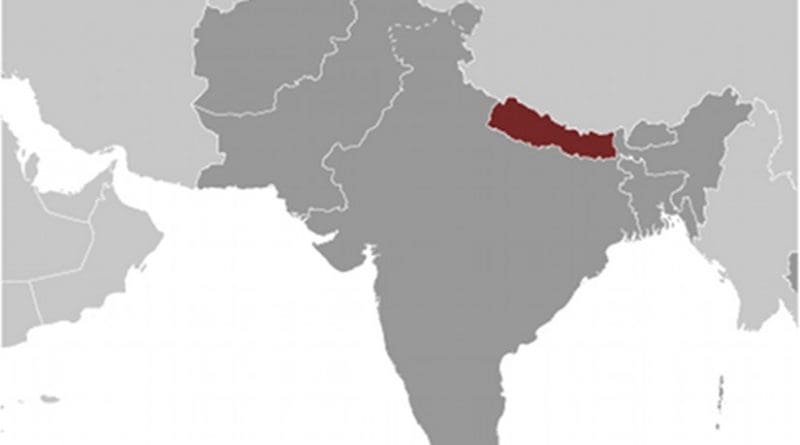Nepal Political Earthquake: Congress Shocked And Surprised – Analysis
By SAAG
By Dr. S. Chandrasekharan
On October 3, the three leftist parties, the UML, Maoist Centre led by Dahal and the Naya Shakti led by Baburam Bhattarai agreed to contest the next two tier elections under the same political banner and eventually form a single communist party. This happened despite the fact that Dahal’s Maoist Centre continued to be a coalition partner of the present government led by the Nepali Congress.
A six-point deal that preceded the announcement had agreed among other things Rule of law, Curbing Corruption, provide stability and economic prosperity. Another important point agreed to, was “enhancement of national independence”- a euphemism for alleged hegemony of India.
An eight-member panel has been appointed to expedite the agenda and the seats are to be shared 60-40 between UML and the Maoist Centre. Bhattarai’s party will be accommodated between the two. The unified party will be named communist party of Nepal with Sun as its common symbol for the elections where it is permissible.
This alliance now being called the “Grand Left Alliance” is likely to be a formidable group and is a major development in the political landscape of Nepal. Their hopes are that they would rule Nepal for the next ten years. What triggered the alliance was perhaps the run away success of UML led by Oli in the recent local body elections,who campaigned on a “nationalist platform” ( read anti Indian). The Maoist Centre led by Dahal was a poor distant third and the Naya Sakthi of Baburam Bhattarai who broke away from Dahal had a dismal performance. The only exception to the general result was that in the recently held election to the Terai Province 2, the UML as well as Maoist Centre fared badly.
In the local polls for 753 units, UML won in 294, while the Maoist Centre polled 105 thus forming theoretically a majority of its own. In the last election to the Madhesi majority province No. 2. , the Nepali Congress led with 40 seats followed by the Madhesi groups RJPN of Mahant Thakur and FSFN of Upendra Yadav with 25 and 26 respectively, followed by Maoist centre with 21 and the UML 18.
Both Mahant Thakur and Upendra Yadav have announced that they would fight the next two elections together.
Each leftist group had its own compulsions for forming the alliance. The elections to the provincial and national levels were coming too close on November 26 and December 7 respectively, with no time to take corrective measures.
The Maoist group had to be in a group with leverage to power as other wise that they will be hounded out for their past crimes in the decade old civil war. They had maintained that there cannot be more than one leftist group right from the end of civil war ( Bhattarai had mentioned it ) and soon realised that the UML was better organised group with support from the middle class. The performance of the UML did not come as a surprise and with Oli now in an unenviable position (someone had said “Oli is King”) thanks to India in a way, the Maoists had no alternative left but to join them. Baburam Bhattarai had no choice either considering his party’s performance. One feels sorry for poor Bhattarai who declared after the merger that the alliance is a “massive polarization with a new discourse.”
The Nepali Congress is obviously surprised and shell shocked. In one of the media reports it has been mentioned that 62 percent of the Nepali voters generally vote for the left. It has been the aim of Nepali Congress in the past not to let the leftist parties come together and it had been succeeding from GP’s time. But now the leftist challenge appears to be unstoppable.
Hectic efforts are being made by Deuba and others to unite all the democratic parties together. Gachhadar with his flock has returned and other minor parties are being wooed. The RPP with three factions led by dominant personalities is also being invited. Kamal Thapa one of the leaders of RJP is likely to join the cabinet. He would expect a Dy. Prime Ministers post!
The problems faced by the Nepali Congress are purely internal as there is sufficient goodwill among the electorate for the party. The party is divided vertically into many factions and Deuba has no control over them. While the influence of the “dynasty” has diminished there are no charismatic and popular leaders to lead the party. The youngsters like Gagan Thapa are not being encouraged.
Still, there is now an opportunity for the Nepali Congress to reorganize itself and choose new and competent hands to lead the party. It is a set -back no doubt, but it could be taken as a challenge and an opportunity to “reinvent” itself.
There is also no doubt that a leftist dispensation in Nepal will be unpalatable to India. The Chinese influence may grow. The BRI initiative will sail through. Again it is an opportunity for India to reset its relations on a more solid foundation. One such thing would be that the report of the “eminent persons group” on the relations between the two countries which has just come out would need an urgent and objective consideration.

